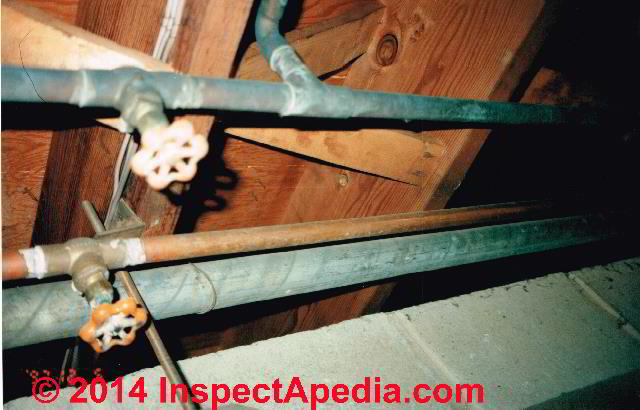Install water hammer arrestors.
Intermittent noise in attic after outside water turned on.
If you see water or water damage call a plumber immediately or a roofer if the water dripping sounds occur only when it is raining and or when there is ice or snow on the roof.
Let the top faucet run until it stops sputtering then turn it off.
Intermittent or constant squealing points to a misaligned or worn fan belt.
Open your faucets to drain all of the water from your plumbing system.
At this point the air will be refilled in the air chambers.
If you don t replace a worn fan belt it will eventually break so you run the risk of not having air.
Turn the water back on.
The sound can sometimes come and go depending on temperature and humidity levels which makes the belt expand and contract.
What causes the noise.
A drain piping leak inside of a building cavity can also produce a noise that is hard to track down.
Air can become trapped in your pipes due to issues in the water line.
The incoming water will flush the air out of the pipes but not out of the vertical air chamber where the air supply has been restored.
Turn off the water supply to your house at the main supply or street level.
We recently noticed the sound of water running in the pipes even when nothing is turned on.
We checked through the house the noise stops when the main water line is off and when the hot water is off so we figure it is the cold water line somewhere.
If your boiler is knocking your circulation pump may be on its way out.
As hot water flows through a cold metal or plastic pipe a process of expansion can cause a rapid ticking sound for approximately 45 seconds followed by slower intermittent ticking as the pipe.
If you re still stumped i would turn off the house s water and check for visible water damage throughout the home and look for water pooling in the yard around the outside of the house or in.
If the sound continues the u s.
If you do not find water beneath the location of the dripping sound but the troubling water sound persists conduct a water loss test.
Water hammers can also result in a series of smaller bangs in your pipes.
Department of energy suggests placing shims under one side of the radiator to tilt the excess water back toward the pipe or steam trap.
Open the lowest faucet it s usually outside or in the basement and let all the water drain out.
If there is a water leak that water likely would find its way down there.
Turn the lowest faucet off the one you opened in step 3 and turn the water main back on.

